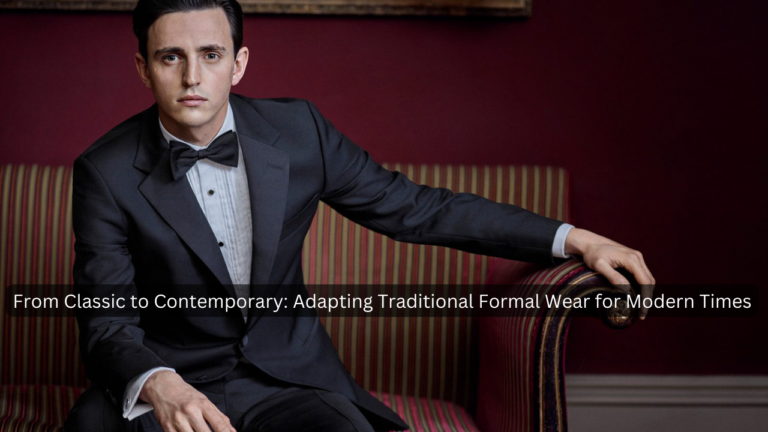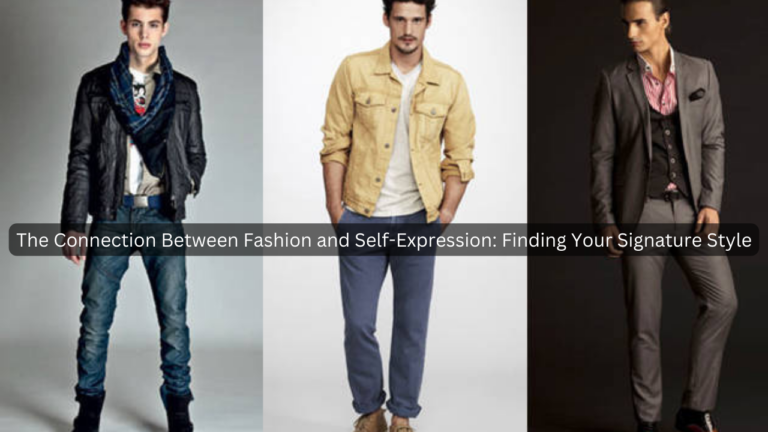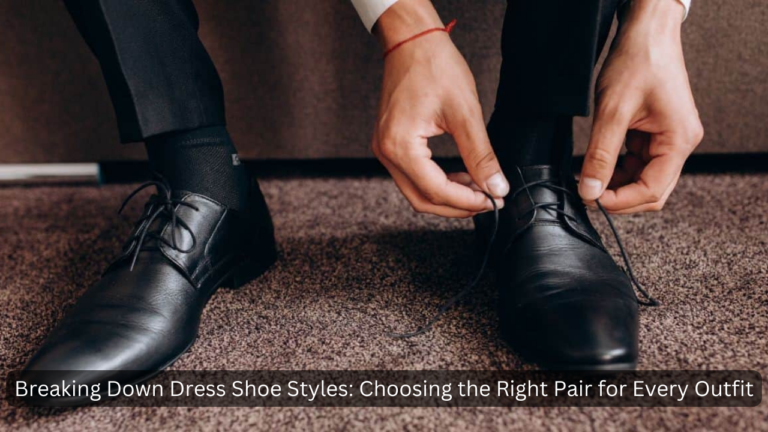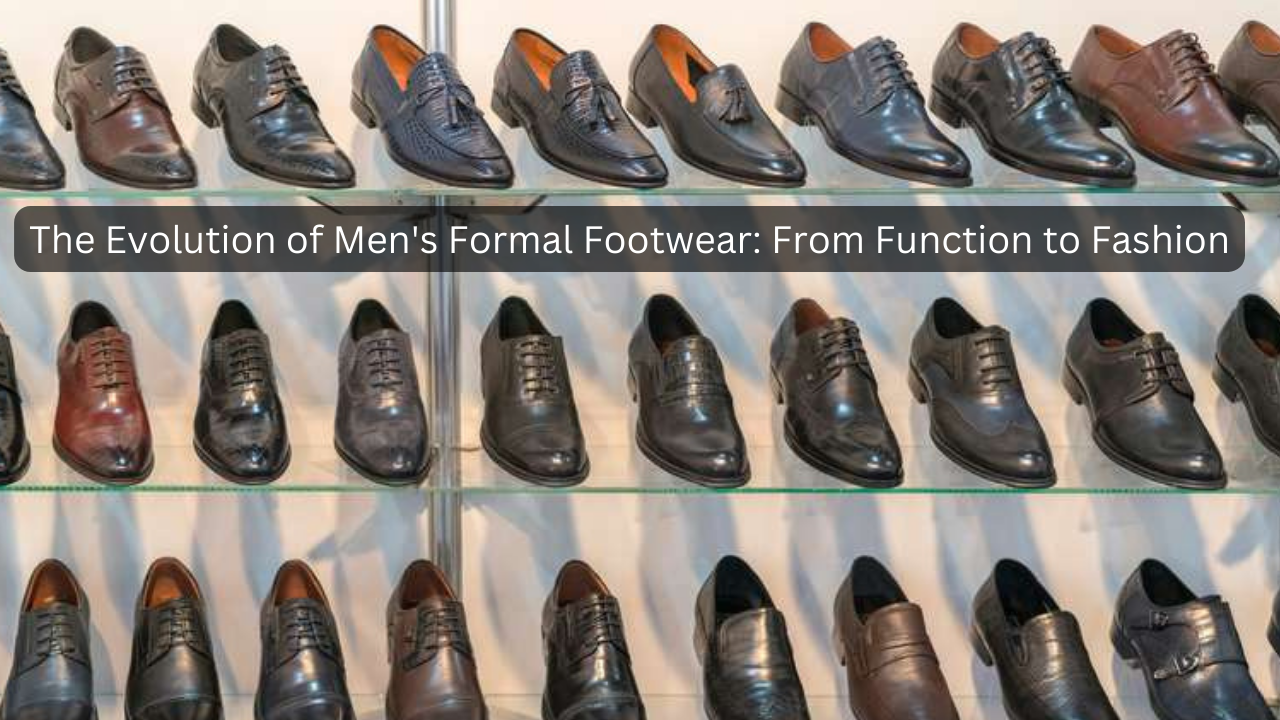
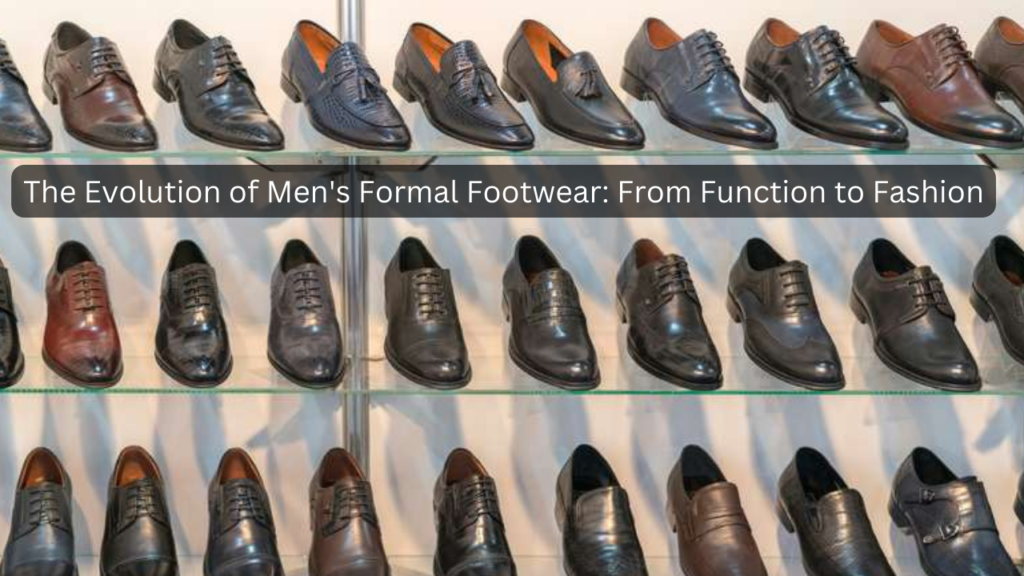
Table of Contents
Introduction
Footwear has long been a cornerstone of men’s fashion, transcending mere functionality to become a defining element of style and identity. From ancient times to the present day, shoes have not only protected feet but also conveyed social status, cultural heritage, and personal taste. In the realm of formal attire, this significance is particularly pronounced, as formal footwear not only complements the ensemble but often serves as its focal point.
Brief overview of the importance of footwear in men’s fashion
The evolution of men’s formal footwear mirrors broader shifts in fashion and societal norms. What began as utilitarian footwear designed primarily for protection and durability has evolved into a canvas for craftsmanship, innovation, and self-expression. This evolution spans centuries, marked by changes in materials, styles, and manufacturing techniques, reflecting both practical needs and evolving aesthetic preferences.
Introduction to the evolution of formal footwear
As we delve into the history and development of men‘s formal footwear, we uncover not just a chronicle of design evolution but also a testament to the enduring allure of craftsmanship and the transformative power of fashion. Join us on a journey through time as we explore how these once humble articles of clothing have risen to become icons of style and sophistication.
Early History and Functionality
Origins of Formal Footwear
Formal footwear finds its roots in ancient civilizations where footwear served a dual purpose: practicality and symbolism. Early examples from civilizations like ancient Egypt, Greece, and Rome reveal sandals and leather shoes crafted not just for protection against rough terrain but also as markers of social status and hierarchy. These early shoes were often simple in design, made from locally available materials such as leather, woven reeds, or animal hides.
Functionality Over Style: Shoes as Protection and Status Symbols
In these ancient societies, the quality and design of footwear were indicative of an individual’s wealth and social standing. Shoes adorned with intricate patterns or made from exotic materials signified elite status, while simpler designs were more common among the general populace. Beyond status, footwear played a crucial role in protecting the wearer’s feet from the elements, sharp objects, and extremes of temperature—a practical necessity in both urban and rural settings.
Examples from Ancient Civilizations
In ancient Egypt, sandals made from papyrus or palm leaves provided ventilation in the hot desert climate, showcasing early innovations in comfort and functionality. Meanwhile, ancient Greek and Roman footwear evolved to include sturdier leather sandals and shoes, often embellished with decorative elements to denote rank or affiliation.
These early examples illustrate how formal footwear began as a fusion of practical necessity and cultural expression, laying the groundwork for its evolution into the diverse and sophisticated styles seen in modern times.
Renaissance and the Birth of Modern Formal Styles
Transition from Medieval to Renaissance Footwear
The Renaissance era marked a pivotal shift in the evolution of men’s formal footwear, moving away from the utilitarian styles of the Middle Ages towards more elaborate and ornamental designs. As Europe emerged from the medieval period, there was a renewed emphasis on art, culture, and refinement, influencing every aspect of life, including fashion.
Introduction of Heels and the Rise of Decorative Elements
One of the significant innovations during the Renaissance was the introduction of heels in men’s footwear. Initially worn by riders to secure their stance in stirrups, heels soon became a symbol of status and masculinity among the European elite. Concurrently, footwear began to feature intricate decorative elements such as embroidery, embellishments with precious metals, and intricate stitching patterns, reflecting the wealth and artistic sensibilities of the Renaissance court.
Development of Specific Styles
During this period, distinct styles of formal footwear began to emerge, each catering to different social occasions and personal tastes. The evolution of the Oxford and the Brogue, for instance, showcased variations in construction and design that catered to both practicality and aesthetic appeal. The development of specific styles not only diversified options for men’s formal attire but also set the stage for future innovations in shoemaking craftsmanship.
The Renaissance era’s influence on men’s formal footwear laid the foundation for the styles and traditions that continue to define contemporary fashion. This period of artistic flourishing and cultural exchange not only elevated the status of footwear but also transformed it into a vehicle for expressing personal style and social standing.
Industrial Revolution and Mass Production
Impact of Industrialization on Footwear Production
The Industrial Revolution in the 18th and 19th centuries brought about transformative changes in the production of men’s formal footwear. Prior to this era, shoes were predominantly handmade by skilled artisans, limiting production capacity and accessibility. However, with the advent of mechanization and the development of factory systems, footwear production underwent a revolution of its own.
Standardization of Sizes and Styles
One of the key advancements during the Industrial Revolution was the standardization of shoe sizes and styles. Mass production techniques enabled manufacturers to produce footwear in larger quantities and with greater consistency in size and fit. This standardization not only made shoes more accessible to a broader population but also facilitated the growth of global markets for men’s formal footwear.
Role of Shoemakers and Craftsmen in the 19th Century
While industrialization brought about efficiencies in production, traditional shoemakers and craftsmen continued to play a significant role in the 19th century. Many artisans adapted to new technologies, working alongside machines to maintain quality standards and introduce innovative designs. Their craftsmanship and attention to detail ensured that even mass-produced footwear retained elements of bespoke quality and durability.
The Industrial Revolution’s impact on footwear production laid the groundwork for the modern footwear industry, shaping consumer preferences, manufacturing processes, and global trade dynamics. It marked a turning point in the evolution of men’s formal footwear, making stylish and well-fitting shoes more accessible to individuals across various social strata.
20th Century Innovations and Style Revolution
Influence of World Wars on Footwear Design
The 20th century witnessed significant innovations and transformations in men’s formal footwear, shaped in part by the tumultuous events of two world wars. During World War I, practicality and durability were paramount, leading to the adoption of sturdier designs and materials such as leather boots for military use. This period spurred advancements in comfort and functionality, influencing civilian footwear trends after the war.
World War II further accelerated changes in footwear design. Military demands for lightweight yet resilient footwear pushed manufacturers to innovate with new materials like synthetic rubber and nylon. Combat boots and utility shoes designed for soldiers’ rigorous conditions laid the groundwork for post-war civilian footwear that prioritized both style and performance.
Rise of Iconic Styles
Throughout the 20th century, iconic styles of men’s formal footwear emerged and became enduring symbols of fashion and status. The Oxford, with its closed lacing system and sleek silhouette, became synonymous with elegance and versatility. Meanwhile, the Brogue evolved from its practical Scottish origins into a stylish option characterized by decorative perforations and wingtip designs.
Evolution of Materials and Construction Techniques
Advancements in materials and construction techniques also defined 20th-century footwear innovation. The introduction of synthetic materials like PVC and later, lightweight foams and advanced polymers, revolutionized shoe design, offering durability and flexibility without sacrificing style. Concurrently, traditional craftsmanship techniques persisted, blending with modern manufacturing processes to create footwear that combined heritage with contemporary appeal.
The 20th century marked a style revolution in men’s formal footwear, driven by technological advancements, cultural shifts, and global events. From the battlefield to the boardroom, these innovations not only transformed the way shoes were made but also how they were perceived as essential elements of men’s fashion and identity.
Contemporary Trends and Innovations
Influence of Fashion Designers on Formal Footwear
In the 21st century, fashion designers have played a pivotal role in reshaping men’s formal footwear, blending traditional craftsmanship with innovative design concepts. Designers like Tom Ford, Giorgio Armani, and Christian Louboutin have pushed boundaries with bold reinterpretations of classic styles, infusing them with modern flair and luxury materials. Their influence extends beyond aesthetics to encompass comfort, functionality, and the integration of cutting-edge technologies.
Sustainability and Ethical Considerations in Modern Shoe Production
Increasingly, sustainability and ethical considerations have become central to modern shoe production. As awareness grows about environmental impact and labor practices, consumers and brands alike are embracing sustainable materials such as organic cotton, recycled plastics, and vegan leather alternatives. Ethical sourcing and transparent supply chains are also prioritized, ensuring that every step of production meets high ethical standards.
Popular Styles and Trends in the 21st Century
In the 21st century, men’s formal footwear has witnessed a diversification of styles to accommodate varying tastes and lifestyles. Classic styles like the Oxford and the Derby remain timeless staples, favored for their versatility and sophistication. Simultaneously, minimalist designs have gained popularity, emphasizing clean lines and understated elegance. Sneaker-inspired formal shoes, known as dress code sneakers, have also emerged, bridging the gap between formal and casual attire.
Contemporary trends in men’s formal footwear reflect a blend of tradition and innovation, where craftsmanship, sustainability, and style converge to meet the demands of a modern, conscientious consumer. As fashion continues to evolve, the future of men’s formal footwear promises to uphold both aesthetic appeal and ethical responsibility in equal measure.
Cultural and Social Significance
Formal Footwear as a Symbol of Status and Identity
Throughout history and across cultures, men’s formal footwear has served as more than just practical attire; it has been a powerful symbol of status, identity, and cultural heritage. From ancient times to the present day, the style, material, and craftsmanship of formal shoes have often reflected an individual’s social standing, profession, and personal taste. The Oxford’s understated elegance or the Brogue’s intricate detailing, for example, have conveyed nuances of wealth and sophistication, while military-inspired boots have symbolized resilience and duty.
Impact of Cultural Diversity on Global Footwear Trends
In a globalized world, cultural diversity plays a pivotal role in shaping men’s formal footwear trends. Each region brings its own unique traditions and influences to the design and production of shoes. For instance, Italian craftsmanship is renowned for its meticulous attention to detail and luxurious materials, while British shoemakers are celebrated for their classic, enduring styles. The fusion of these diverse influences has led to a rich tapestry of global footwear trends that cater to a wide range of tastes and preferences.
Representation of Masculinity and Fashion in Formal Shoes
Men’s formal footwear also serves as a canvas for expressing masculinity and fashion ideals. Over time, the interpretation of masculinity in fashion has evolved, with formal shoes evolving to reflect these changes. Whether through sleek, minimalist designs that emphasize professionalism and modernity, or through bold, statement-making styles that challenge traditional norms, formal footwear continues to redefine what it means to dress with confidence and style.
The cultural and social significance of men’s formal footwear underscores its enduring relevance as more than just a functional accessory. It embodies history, craftsmanship, and personal expression, making it a potent symbol of identity and aspiration in today’s globalized society.
Conclusion
Men’s formal footwear has traversed a remarkable journey from humble beginnings as a functional necessity to becoming a powerful fashion statement. Throughout history, shoes have not only protected feet but also reflected cultural norms, social status, and individual identity. From the sandals of ancient civilizations to the sophisticated Oxfords and Brogues of today, the evolution of formal footwear mirrors broader shifts in fashion, technology, and societal values.
Recap of the Evolution from Functional Necessity to Fashion Statement
Early formal footwear was born out of practicality, designed to shield feet from harsh environments while signaling status and social standing. The Renaissance era introduced ornate designs and styles, setting the stage for the craftsmanship and elegance that define modern formal shoes. The Industrial Revolution democratized access to footwear through mass production, while the 20th century witnessed innovations driven by global conflicts and the creative vision of fashion designers. Today, men’s formal footwear blends heritage with contemporary trends, offering a balance of tradition and innovation.
Future Trends and Innovations in Men’s Formal Footwear
Looking ahead, the future of men’s formal footwear promises continued innovation and evolution. Sustainability will play a pivotal role, with a growing emphasis on eco-friendly materials and ethical production practices. Technological advancements, such as 3D printing and adaptive materials, may revolutionize how shoes are designed and manufactured. Additionally, the influence of diverse cultural aesthetics will continue to shape global footwear trends, offering consumers a wide array of choices that reflect their personal values and lifestyles.
Closing Thoughts on the Enduring Appeal of Classic Styles
Amidst evolving trends and innovations, classic styles like the Oxford and the Brogue endure as timeless icons of sophistication and refinement. Their versatility allows them to seamless transition from formal business settings to social occasions, embodying a sense of timeless elegance that transcends fleeting fashion trends. The enduring appeal of these styles lies in their ability to merge tradition with contemporary relevance, offering wearers a sense of confidence and sophistication that never goes out of style.
As men’s formal footwear continues to evolve, one thing remains certain: its role as a symbol of identity, status, and self-expression will continue to resonate with individuals across cultures and generations. Whether embracing classic designs or embracing new innovations, men’s formal footwear will always be more than just shoes—it’s a testament to craftsmanship, personal style, and the enduring pursuit of sartorial excellence.
